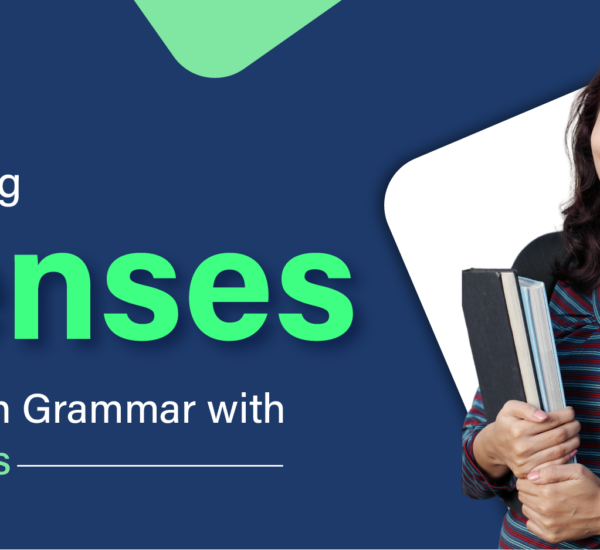Verbs, the powerhouses of language, play a pivotal role in conveying actions, states, and relationships within a sentence. This article aims to delve into the intricacies of verbs, covering action verbs, linking verbs, auxiliary verbs, and various verb forms. Practical Verbs in English Grammar with Examples will illuminate their usage, providing a comprehensive understanding of this essential grammatical element.
Action Verbs
- Definition and Examples: Action verbs denote physical or mental actions. Examples include “run,” “think,” and “create.”
- Conveying Physical or Mental Actions: Action verbs add dynamism to sentences by expressing what the subject is doing or thinking. “She runs every morning.”
Linking Verbs
- Explanation and Instances: Linking verbs connect the subject to its state or condition. Examples include “is,” “seems,” and “becomes.”
- Connecting the Subject to Its State or Condition: Linking verbs describe the subject’s state, condition, or identity. “The cake smells delicious.”
Auxiliary Verbs
- Defining Auxiliary Verbs: Auxiliary verbs assist the main verbs in expressing time, modality, or emphasis. Common examples are “is,” “have,” and “will.”
- Assisting Main Verbs in Expressing Time, Modality, or Emphasis: Auxiliary verbs work in conjunction with main verbs to convey nuanced meanings. “She is singing beautifully.”
Also Read: 20 Top Most Common Slang Words Used Everyday with Examples
Regular and Irregular Verbs
- Differentiating Regular and Irregular Verbs: Regular verbs follow a consistent pattern in forming past tense (“walked”), while irregular verbs have unique past forms (“ran”).
- Examples and Common Patterns: Understanding the patterns of regular and irregular verbs enhances accuracy in verb conjugation. “He played the guitar yesterday.”
Transitive and Intransitive Verbs
- Identifying Transitive and Intransitive Verbs: Transitive verbs require a direct object for completeness (“eat”), while intransitive verbs do not (“sleep”).
- Understanding Direct Objects and Their Absence: Recognizing the presence or absence of direct objects clarifies transitivity distinctions. “She ate a delicious meal.”
Verb Tenses
- Present, Past, and Future Tenses: Verb tenses convey the timing of actions. Present (“write”), past (“wrote”), and future (“will write”) illustrate different time frames.
- Examples Illustrating Tense Variations: Effective use of verb tenses adds precision to storytelling. “She writes a letter every day.”
Modal Verbs
- Defining Modal Verbs: Modal verbs express ability (“can”), possibility (“might”), necessity (“must”), and permission (“may”).
- Expressing Ability, Possibility, Necessity, and Permission: Modal verbs add nuance to statements, indicating degrees of certainty or obligation. “You must finish the assignment.”
Phrasal Verbs
- Explanation and Examples of Phrasal Verbs: Phrasal verbs consist of a verb and a preposition/adverb (“look up,” “turn off”). They often have idiomatic meanings.
- Understanding Verb + Preposition/Adverb Combinations: Mastering phrasal verbs enriches language use, as they often convey specific, nuanced meanings. “He looked up the new word in the dictionary.”
Gerunds and Infinitives
- Differentiating Gerunds and Infinitives: Gerunds (“-ing” form, e.g., “running”) and infinitives (“to” + base form, e.g., “to run”) serve as nouns or verb complements.
- Appropriate Usage and Examples: Understanding when to use gerunds or infinitives enhances sentence structure. “She enjoys running in the park.”
Active and Passive Voice
- Understanding Active and Passive Voice: Active voice (“The cat chased the mouse”) emphasizes the subject’s action, while passive voice (“The mouse was chased by the cat”) emphasizes the receiver of the action.
- Examples Illustrating Voice Transformations: Manipulating voice adds variety to writing styles. “The chef prepared the meal” (active) can become “The meal was prepared by the chef” (passive).
Mood in Verbs
- Defining Mood in Verbs: Verb mood expresses the speaker’s attitude. Indicative (“He runs”), imperative (“Run!”), and subjunctive (“If I were you”) moods serve different communicative purposes.
- Examples of Indicative, Imperative, and Subjunctive Moods: Recognizing verb mood nuances allows for effective communication in various contexts. “She insists that he be present” (subjunctive).
Verb Agreement
- Ensuring Agreement Between Subjects and Verbs: Subject-verb agreement maintains grammatical correctness. “The team plays well together.”
- Navigating Singular and Plural Subjects: Matching verb forms to singular or plural subjects is essential for grammatical accuracy. “The students study diligently.”
Consistency in Verb Tenses
- Importance of Maintaining Tense Consistency: Consistent tense usage ensures coherence in storytelling and writing. Avoiding unnecessary tense shifts enhances reader comprehension.
- Tips for Avoiding Tense Shifts: Awareness and careful editing contribute to maintaining tense consistency. Consistent review of verb tenses enhances overall writing quality.
Also Read: 20 Top Common English Grammar Used Everyday with Examples
Enroll in “The Fluent Life’s” Personalized English Communication Course, where language mastery meets tailored learning. Dive into the intricacies of Verbs in English Grammar with Examples, as we guide you through a comprehensive journey of linguistic understanding. Our course empowers you to communicate confidently and effectively in English, equipping you with the skills needed to navigate diverse contexts with ease. With personalized attention and engaging resources, we ensure that every step of your language-learning journey is rewarding and impactful.
Conclusion
- Recap of the Diverse Aspects of Verbs: Verbs, with their various forms and functions, infuse vitality into language, enabling dynamic expression of actions, states, and relationships.
- Encouragement for Dynamic and Effective Verb Usage: Mastering the intricacies of verbs is a journey toward dynamic and effective communication. Embrace the versatility of verbs to elevate your language skills.
Top 5 Unique FAQs On Verbs in English Grammar
Q.1: Can a verb be both transitive and intransitive?
A: Some verbs can function as both transitive and intransitive, depending on the context. For example, “eat” (transitive) and “sleep” (intransitive).
Q.2: How do I identify the main verb in a sentence with auxiliary verbs?
A: The main verb carries the primary meaning and is not preceded by an auxiliary verb. For instance, in “She is singing,” “singing” is the main verb.
Q.3: Are gerunds always formed by adding “-ing” to the base form of a verb?
A: Yes, gerunds are formed by adding “-ing” to the base form of a verb. For example, “running,” “swimming,” and “writing” are gerunds.
Q.4: Is it acceptable to use the passive voice in academic writing?
A: While active voice is generally preferred in academic writing, the passive voice can be used strategically to emphasize the recipient of an action or maintain objectivity.
Q.5: How can I improve my understanding of verb moods?
A: Practice identifying and using indicative, imperative, and subjunctive moods in various sentences. Pay attention to the nuances each mood brings to communication.
Also Read: Top 100 Commonly Used A to Z Phrasal Verbs for English Fluency






